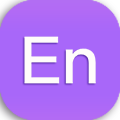介词by,through,with,in表方法时的区别
2024-09-20 21:48:38 学考宝 作者:佚名
问题描述
介词 by, through, with, in 都可以表“方法”,意思是“用……”,请问它们在用法上有区别吗?
老师答疑
龙老师:
■by 表示方式或手段,主要有两类用法:
用法一:是表示抽象的方式或手段,后接名词时习惯上不用冠词,尤其后接交通工具(如 bus, bike, train, plane, car, taxi, ship 等)或与交通工具密切相关的名词(如 air, water, land, road 等),在句中主要用作方式状语。如:
He suggested to us that we should go by train. 他向我们提议坐火车去。
We usually go there by bus, but this time we’ll go by bike for a change. 我们通常是乘公共汽车去那儿,但这次我们想个方式骑自行车去。
Some came by land and some by water. 一些人由陆路来,一些人从水路来。
注意以下表示方式的表达与上面的情况相似,也主要表示抽象的方式或手段,后接名词时习惯上不用冠词:
by phone 用电话 by telegram 用电报
by letter 用信件 by express 用快件
by air mail 用航空邮件 by ordinary mail 用平信
by post 用邮寄 by radio 用无线电
by hand 用手工 by machine 用机器
用法二:后接动名词表示行为的方式或手段。如:
He makes a living by teaching. 他以教书为生。
Lock this door by turning the key twice to the left. 锁这扇门要把钥匙向左转两圈。
■by 与 with 表示方式的区别
主要体现在:by 表示抽象的方式和手段,with 表示具体的方法和工具。试体会:
The letter was written by hand. 这封信是用手写的(即不是打印的)。(by hand表示一种抽象的手段,是无形的,注意其中没用冠词或其他限定词)
I write with my hand, but he writes with his mouth. 我用手写字,但他却用嘴写字。(with one’s hand表示一种具体的工具,是有形的,注意其中用了物主代词)
■through 表示方式或方法
它主要表示方式或方法,意思是“从,凭,通过”,有时具有较强的中介性。如:
He got his job through a friend. 他通过一个朋友(帮忙)得到这份工作。
It was through you that we were able to meet again. 全仗你的帮助我们才能重聚。
I heard of the job through a newspaper advertisement. 我从报上的广告中知道了这个工作。
■in表示方式或手段主要有两个用法
用法一:表示用某种语言。如:
What do you call this in English? / How do you say this in English? 这个东西用英语怎么说?
If a book is in English, that means slow progress for you. 如果一本书是用英语写的,那就意味着你要读慢些。
用法二:表示用某种材料。如:
Write your homework in ink, not in pencil. 用钢笔写家庭作业,不要用铅笔。
Writing a letter in red ink is always avoided, because it is not polite. 用红墨水写信不礼貌,所以应避免使用。
Dust yourself down—you’re covered in chalk. 把你自己身上掸掸——上面都是粉笔灰。
比较以下两句:
You must write in pencil. 你必须用铅笔写。(in表材料)
You must write with a pencil. 你必须要用铅笔写。(with表工具)
黎老师:
▲by 与 with 表示“用”的区别
(1) by 可用于动作,表示通过作某事取得预期的结果,有时 by 还用于抽象的方法、无形的手段。with 则通常用来表示有形的手段,即指使用的工具或其他具体的东西。例如:
I killed the spider by hitting it. 我拍死了蜘蛛。
I killed the spider with a newspaper. 我用报纸把蜘蛛打死了。
(2) by 可表示动作的行为者,可以是人也可以是物;with 则表示所使用的工具。例如:
He was seriously wounded by a rolling stone. 滚过来的石头使他受了重伤。
He was seriously wounded with a stone. 他被人用石头打成重伤。
The rat was killed by Tom with a stick. 那只老鼠被汤姆用棍打死了。
(《薄冰英语惯用法词典》)
▲介词 in 表示“用”的意思
其宾语通常是表示语言的名词、words 等,例如:
in English 用英语
in Chinese 用汉语
in this way 用这种方法


















